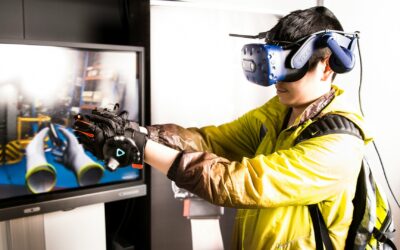Virtual Reality Tools for Future Engineering, Education, Medicine, Manufacturing and Much More
Virtual Reality (VR), Augmented Reality (AR), and Mixed Reality (XR) are changing the way engineering design is taught, healthcare and medical procedures are conducted, and manufacturing planning and process improvements are executed. The potential for VR, AR and XR to substitute physical embodiments of engineering design prototypes is maturing as an affordable tool.
VR hardware, previously limited to highly customized applications, is widely available through standardized head-mounted-displays (HMDs), digital 3D stereoscopic projection technologies, and VR Walls. Coupled with a wide range of tracking technologies, immersive and active VR is emerging as a mainstream higher education component, especially in teaching and conducting research in engineering design. VR has proven to enhance patient-specific personalized medicine, surgery planning and a wide range of manufacturing planning and process improvement. The list goes on and on when it comes to commercial ecommerce and metaverse emerging applications.
For engineering design applications, with the abundance of computer aided design content, virtually all cutting-edge designs are readily available to be deployed into VR content. The ability to immerse design teams into their designs is key to successful design review. Teams of engineering students, practicing engineers and product designers can immerse themselves in a VR environment and enjoy a thorough larger-than-life-size experience.
Figure 1 below shows a group of mechanical engineering seniors at the GameAbove College of Engineering and Technology at Eastern Michigan University (EMU) conducting a weekly design review meeting inside a VR facility housed at EMU. The teams of designers can assemble, dissemble and conduct a detailed design review while enjoying an immersive VR experience—an experience that is largely replacing rapid prototyping and physical prototyping at least during the initial stages of product development and design optimization phases. What used to be provided by rapid prototyping is now available through accelerated prototyping through VR. The running cost of VR accelerated prototyping is becoming a fraction of the running cost of most advanced rapid prototyping techniques serving initial phases of the engineering design process.
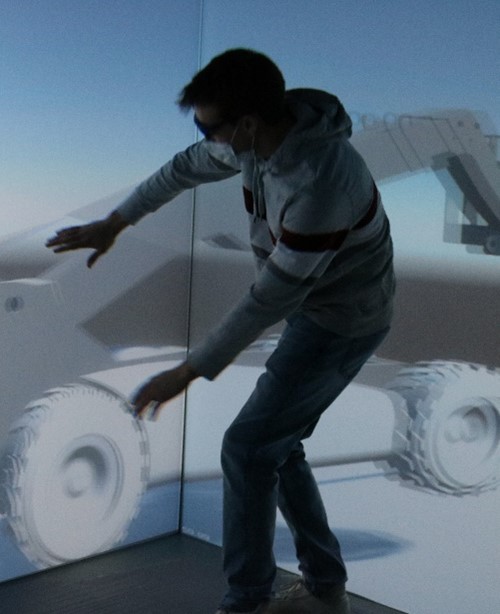
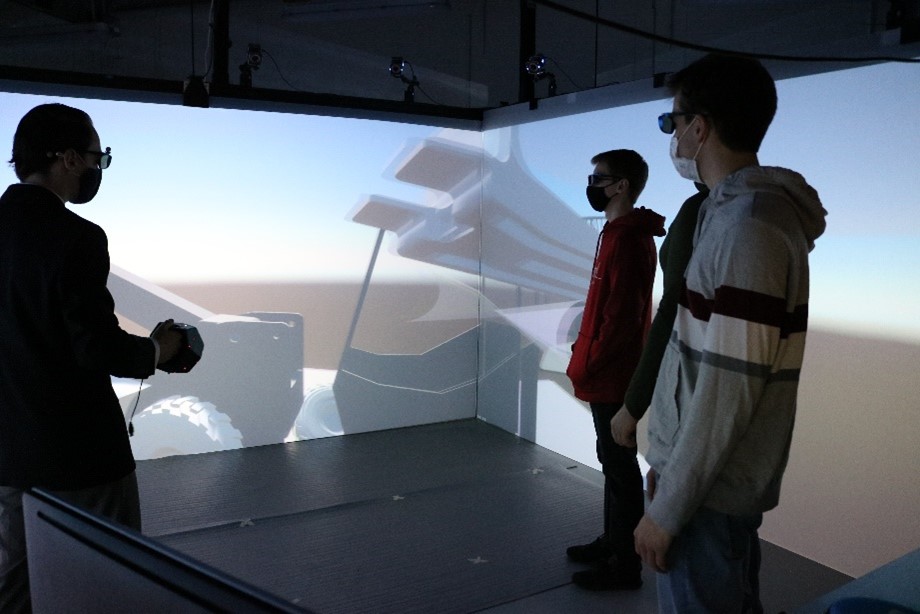
VR is emerging as a tool of choice for anatomical and physiological simulations in medicine education and training. Products have matured enough to provide photo-realistic rendering of 3D VR experiences of anatomical content for medicine education. In addition, the advances in affordable Computer Tomography (CT) content transformation into 3D content have boosted the viability of deploying the 3D CT content into VR. Doctors and healthcare professionals can now enjoy the ability to visualize what used to be abstract-2D sliced scans into a 3D content in VR environment. Figure 2 shows an example of visualizing a hip-joint at EMU 4-wall VR lab. The hip-joint content was transformed from a 2D MRI anonymous content that is publicly available by the University of Iowa. The ability to deploy and visualize CT content in VR is a breakthrough tool that is projected to enhance patient-specific-personalized-medicine and help doctors and surgeons plan procedures with more robustness and accuracy.
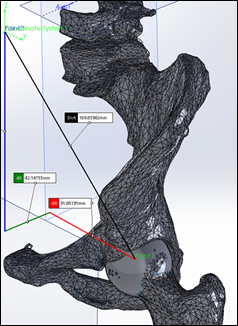
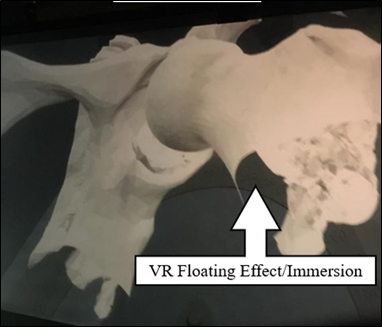
VR is also emerging as an economically sound tool for manufacturing process planning. The ability to transform 3D content of manufacturing shop floor components into VR-ready content is increasingly becoming affordable. With the help of affordable powerful computing hardware and CAD software, the ability to commission manufacturing plants using VR is within reach. Not only does this approach have the promise to cut cost of plant layout and process flow optimization to a minimum, but also VR is emerging as a tool of choice for process improvement teams due to the abundance of CAD content of main players in the durable goods manufacturers.
The VR as a planning tool and process improvement is also becoming an integral part of digital twin applications in manufacturing. Figure 3 shows a VR planning application of an automotive door assembly process as part of the doctoral research works recently completed at GACET-EMU.
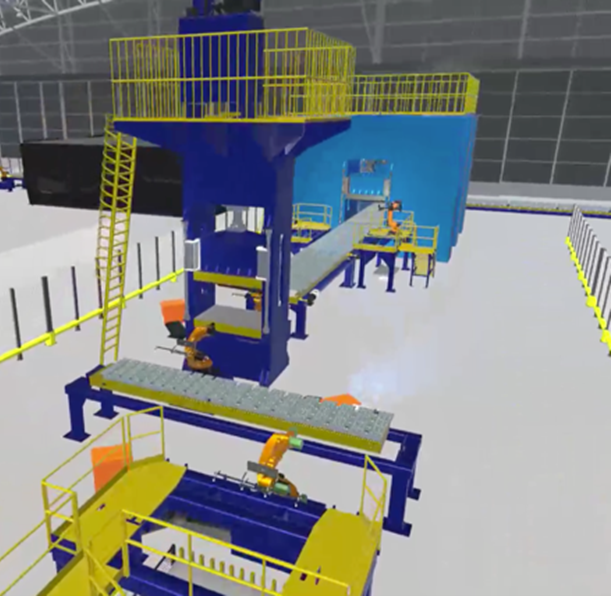
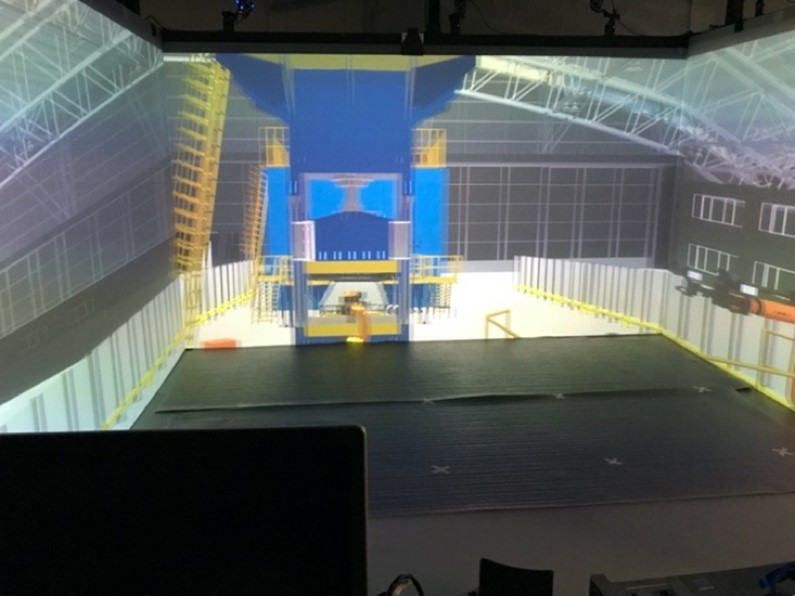
The above are samples of numerous applications of VR that will shape our future ways to design, heal, manufacture, and optimize. The future holds lots of potential for making VR a mainstream phenomenon and will blur the line between virtual reality and reality.
Emad is the Interim Associate Dean, Associate Professor of Mechanical Engineering and Founder and Supervisor of the VR Lab, GameAbove College of Engineering and Technology, Eastern Michigan University. Emad has more than 34 years of combined experience in Mechanical Engineering in both academia and industry. His industry experience spans over 18 years in the areas of product development, energy efficient appliances and sustainability, thermal systems design and engineering management. He is an expert researcher in industry and has been leading industry-academia funded research since 1997. Emad is an innovator with over 17 U.S. pending and issued patents and prior arts; all of which resulted in products sold in North America. Most of his innovations are in the field of sustainable design of domestic and commercial appliances. Emad has advanced knowledge of computer aided engineering (CAE), computational fluid dynamics (CFD) and computational mechanics. He is an expert user and trainer of computer aided design (CAD) using solid modeling. He has conducted research in the areas of heat transfer, thermal-fluids, and energy systems and led many years of research and development projects in interdisciplinary fields. Emad is the recipient of Arch T. Colwell Award from the Society of Automotive Engineers and served for five years as an ABET industry consultant. He also received Executive MBA training courses at the University of Iowa.




